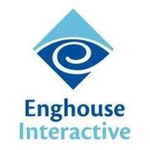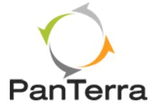Description

Contact Center

VHT Callback
Comprehensive Overview: Contact Center vs VHT Callback
VHT Callback, under the umbrella of Virtual Hold Technology (VHT), is a solution designed to enhance customer experience in contact centers by offering efficient call management and reducing wait times. Below is a detailed overview:
a) Primary Functions and Target Markets
Primary Functions:
- Callback Request: Allows customers to request a callback instead of waiting on hold, thus improving their experience and reducing frustration.
- Queue Management: Efficiently manages call queues by offering callbacks when the expected wait time is long.
- Seamless Integration: Integrates with existing contact center infrastructures and CRM systems.
- Omnichannel Support: Provides callback options across various channels, including voice, web, mobile apps, and social media.
- Analytics and Reporting: Offers insights into call patterns, wait times, and agent performance, enabling contact centers to optimize operations.
Target Markets:
- Large Enterprises: Especially those with high call volumes such as telecommunications, utilities, and financial services.
- Retail: For managing customer inquiries, orders, and support.
- Healthcare: To manage patient appointments and information requests.
- Governmental Agencies: To improve citizen engagement and service delivery.
b) Market Share and User Base
VHT Callback is a prominent player in the contact center solutions market, but exact market share and user base statistics are not typically disclosed in publicly available data. However, it is considered a competitive product alongside other queue management and callback solutions like those offered by competitors such as Genesys, Five9, and NICE inContact.
VHT Callback is used by a range of large to mid-sized businesses due to its ability to integrate with various CRM and contact centers. The user base typically includes thousands of installations worldwide, with strong usage in sectors dealing with high customer interaction volumes.
c) Key Differentiating Factors
-
Adaptive Callback Options: VHT provides adaptive callback solutions that intelligently determine the best time to contact a customer based on various factors such as current queue status and customer preferences.
-
Customer Experience Focus: By minimizing customer effort and frustration with long hold times, VHT Callback enhances customer satisfaction and loyalty, which can significantly impact a company's customer service reputation.
-
Omnichannel Flexibility: Unlike some traditional systems, VHT Callback supports customer interactions across multiple channels which modernizes and streamlines customer interactions.
-
Integration and Compatibility: VHT is noted for its ease of integration with existing systems across different industries, making it a go-to solution for businesses looking to enhance their current infrastructure without significant changes.
-
Analytics and Optimization Tools: The solution offers advanced analytics that help businesses track key performance metrics and optimize their contact center operations for better efficiency.
Overall, the VHT Callback product is designed to address the common pain points of long hold times and poor customer service interactions, positioning itself as a leader in improving customer satisfaction and operational efficiency in contact centers.
Contact Info

Year founded :
Not Available
Not Available
Not Available
Mexico
Not Available

Year founded :
Not Available
Not Available
Not Available
Not Available
Not Available
Feature Similarity Breakdown: Contact Center, VHT Callback
When discussing the feature similarity breakdown for products like Contact Center solutions and VHT (Virtual Hold Technology) Callback, it's essential to consider the domains they operate in and how they serve customers. Here's a detailed breakdown:
a) Core Features in Common
-
Call Management: Both solutions usually offer robust call management capabilities, enabling organizations to handle incoming calls efficiently, reroute them as necessary, and manage queues.
-
Queue Callback Options: They typically include options to allow callers to request a callback instead of waiting on hold. This is a foundational feature for VHT Callback and often a component of advanced Contact Center solutions.
-
Integration Capabilities: Both platforms usually support integration with customer relationship management (CRM) systems, customer databases, and other backend systems to fetch customer details and provide personalized service.
-
Analytics and Reporting: Comprehensive reporting and analytics are common features, enabling businesses to track key performance indicators (KPIs) such as call duration, wait times, and overall customer satisfaction.
-
Scalability: Both solutions are built to handle varying call volumes, making them scalable according to the business's needs.
-
Omnichannel Support: Modern systems often support multiple channels beyond voice, such as email, chat, and social media, to offer a holistic customer support experience.
b) User Interface Comparison
-
Contact Center Solutions: Typically, these solutions come with a more comprehensive user interface (UI) designed for managing various aspects of customer interactions, from telephony to chat and email. The UI might include dashboards that provide a holistic view of all customer interactions and agent productivity tools.
-
VHT Callback: The UI of VHT Callback specifically focuses on the callback management process. It's often simpler compared to full-fledged contact center solutions, concentrating on visualizing callback requests and managing the queue efficiently.
The user interface difference often centers around the scope of functionalities each solution covers. While Contact Centers have UIs designed to handle a multitude of tasks, VHT Callback is optimized for ease of use around its niche functionalities.
c) Unique Features
-
Contact Center Solutions:
- Comprehensive Interaction Management: Often includes features to manage not just voice, but email and chat interactions as well. This allows for seamless transitions between different communication channels.
- Advanced Routing: Beyond basic queue management, these systems often include sophisticated call routing based on various criteria, including agent skills, customer history, and service levels.
- Self-Service Options: Frequently integrated with IVR (Interactive Voice Response) systems that allow callers to resolve questions without the need to speak with a live agent.
-
VHT Callback:
- Callback Specific Services: VHT is specialized in callback solutions, offering more refined control and customization in how and when callbacks are issued compared to a general contact center offering.
- Smart Callback Scheduling: Includes options to schedule callbacks at specific times convenient for the customer, potentially outside normal queue operations.
In summary, while both Contact Center Solutions and VHT Callback share some foundational features, each has its distinct emphasis—full interaction management for Contact Centers versus specialized callback management for VHT Callback. These differences reflect their focuses and propositions in the customer service technology landscape.
Features

Not Available

Not Available
Best Fit Use Cases: Contact Center, VHT Callback
Contact Center:
a) Types of Businesses or Projects:
-
Large Enterprises: Businesses with extensive customer bases, such as telecommunications companies, financial institutions, and airlines, benefit significantly from contact centers. These organizations typically handle a high volume of customer interactions and need a centralized platform to manage communication across multiple channels.
-
E-commerce and Retail: Companies in these sectors require efficient handling of customer inquiries, order processing, and support during high-traffic periods (like sales events), making contact centers a crucial component.
-
Healthcare Providers: Hospitals, clinics, and insurance companies use contact centers for patient inquiries, appointment scheduling, and follow-ups. The ability to handle sensitive information securely is also a key requirement.
-
Technology and IT Support: Firms providing software solutions or IT services use contact centers to offer technical support, troubleshoot issues, and ensure customer satisfaction with their products.
VHT Callback:
b) Preferred Scenarios:
-
Peak Traffic Management: VHT Callback is ideal during peak times when call volumes exceed handling capacity, allowing customers to opt for a callback instead of waiting on hold. This improves customer satisfaction and load management.
-
Resource Optimization: Businesses that experience fluctuating call volumes can utilize VHT Callback to optimize resource allocation, ensuring that agents are not overwhelmed and can handle complex queries more effectively.
-
Enhanced Customer Experience: Companies focusing on customer satisfaction can use VHT Callback to reduce frustration from long hold times, offering a smoother and more personalized customer experience.
-
Service Continuity: In scenarios like system maintenance or unexpected outages, VHT Callback can maintain service continuity by ensuring that customer queries are acknowledged and handled in a timely manner.
d) Industry Verticals and Company Sizes:
-
Industry Verticals: Both Contact Center and VHT Callback cater to a wide array of industries, including retail, banking, healthcare, and technology. The adaptability to handle different types of interactions and integrate with industry-specific software solutions makes these tools versatile.
-
Company Sizes:
-
Small to Medium Enterprises (SMEs): SMEs benefit from contact center solutions with scalable features. They can deploy VHT Callback to manage customer interactions effectively without needing a large number of agents, thus providing high-quality service with limited resources.
-
Large Corporations: These tools are essential for large corporations with complex customer service needs and high interaction volumes. VHT Callback helps manage these interactions, ensuring customer satisfaction and operational efficiency by reducing idle wait times.
-
Overall, both Contact Center and VHT Callback can be tailored to meet the specific communication needs of businesses across various sectors and sizes, improving customer engagement and operational efficiency.
Pricing

Pricing Not Available

Pricing Not Available
Metrics History
Metrics History
Comparing undefined across companies
Conclusion & Final Verdict: Contact Center vs VHT Callback
Conclusion and Final Verdict for Contact Center vs. VHT Callback
When deciding between Contact Center solutions and VHT Callback, it's crucial to consider the specific needs of your organization, such as call volume, customer experience priorities, integration capabilities, and cost considerations. Each solution offers unique advantages and potential drawbacks, so making an educated decision is essential to optimizing your customer service operations.
a) Best Overall Value
Best Overall Value: Contact Center
Considering all factors, a comprehensive Contact Center solution often provides the best overall value. It typically offers a wide range of functionalities, including customer relationship management, advanced analytics, workforce management, and multichannel support, making it a more versatile option for diverse business needs. The all-in-one nature can enhance both efficiency and customer satisfaction, which is pivotal in maintaining competitive advantage.
b) Pros and Cons of Each Product
Contact Center:
-
Pros:
- Comprehensive Features: Includes CRM integration, multichannel communication (voice, chat, email), and analytics.
- Scalability: Can efficiently scale with business growth and changing customer service demands.
- Improved Efficiency: Centralizes customer service operations, enhancing efficiency and coordination within teams.
- Data-Driven Decisions: Advanced analytics provide insights into customer behavior, allowing for proactive improvements.
-
Cons:
- Complex Integration: Can be complex to integrate with existing systems and may require substantial setup time.
- Higher Cost: Typically requires a significant upfront investment and higher ongoing costs.
- Learning Curve: Employees may face a steep learning curve when adapting to the new system.
VHT Callback:
-
Pros:
- Customer Satisfaction: Reduces hold times and increases customer satisfaction by allowing callers to request a callback, thus respecting their time.
- Easy Implementation: Generally easier and faster to deploy compared to full Contact Center solutions.
- Cost-Effective: Often a more affordable option, especially for smaller businesses or those with budget constraints.
- Agent Efficiency: Helps manage call volumes and agent workload effectively.
-
Cons:
- Limited Features: Primarily focuses on call management and lacks the broader suite of features typical in a full Contact Center solution.
- Less Integration: May not integrate as seamlessly with other systems or provide unified analytics.
- Not Scalable: May not easily scale to accommodate larger or rapidly growing operations.
c) Recommendations for Users
For those deciding between a Contact Center and VHT Callback, consider the following recommendations based on your organization's needs:
-
Evaluate Business Needs:
- If your business requires a multifaceted approach to customer service with robust data analytics and CRM integration, a Contact Center might be the better solution.
- If your primary goal is to enhance the customer call experience without extensive changes to your current system, VHT Callback can be a beneficial and cost-effective choice.
-
Budget Constraints:
- Carefully assess your budget. A Contact Center will require a higher initial investment, but may offer more long-term value through enhanced features and capabilities.
- Consider VHT Callback if you're looking for immediate improvements in customer experience at a lower cost.
-
Scalability Concerns:
- Choose a Contact Center if you anticipate growth that will demand more comprehensive customer service capabilities.
- Opt for VHT Callback if your focus is on improving current operations without immediate plans for significant expansion.
By weighing these factors, organizations can make a strategic decision that aligns with their service goals, operational requirements, and budgetary constraints.
Add to compare
Add similar companies



